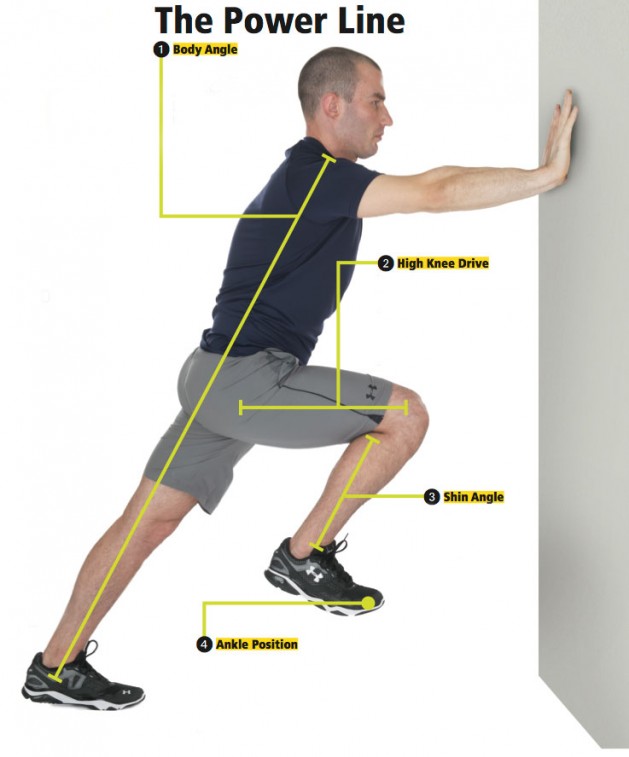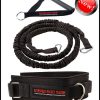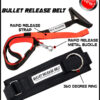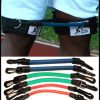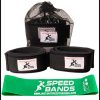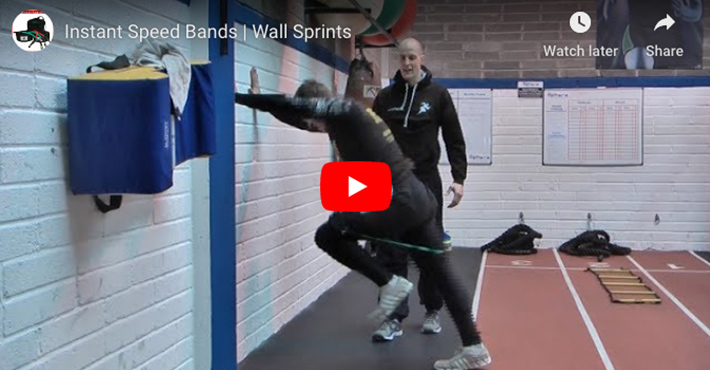
One of the best methods to increase your speed is Resisted Sprints—sprints with some sort of resistance to slow you down. Resisted sprints build lower-body power and cause more muscles to fire. Over time, you’ll be able to sprint much faster.
One of the best ways to get faster is to perform Wall Sprints with Speed Bands, a drill that allow you to focus on your technique with each step.
You’re able to learn proper sprint mechanics one stride at a time, make corrections and gradually progress to a faster pace
Performing this exercise with the Speed Bands will increase leg strength and running power. The resistance bands increase muscle stimulation each time the knee is raised. The hamstrings, quads, hips, glutes and core muscles are all targeted during this exercise.
Wall Sprints with Speed Bands
- 12-15 seconds with resistance (4 sets).
- 15-20 seconds without resistance (2 sets).
The unresisted sets are the most important part of this exercise. When you take the bands off, your legs will feel light and strong giving you the ability to sprint at a faster pace than ever before. This is the optimal time for muscle recruitment. Unresisted sets must be carried out at 100% effort in order to activate your fast twitch muscle fibres.
The Power Line
These Wall Drills allow you to “sprint” without actually running, which helps you get used to the feel of the “power line” position, where your head, shoulders, hips, knees and ankles all form a line that’s angled about 45 degrees from the ground. This position is the ideal form to propel yourself forward and allow your muscles to exert maximum power.
Coaching Points
1. Body Angle
Your head, shoulders, hips, knees and ankles should always be aligned, with your body positioned in a 45-degree angle to the ground.
2. High Knee Drive
Your thighs should be nearly perpendicular to your torso, allowing your hips to move through a full range of motion. If your knee drive is too low, you will have short and choppy strides that lack power.
3. Shin Angle
Your forward shin should be at the same angle as your rear shin (approximately 45 degrees). If your shin is perpendicular to the ground it will absorb your momentum and slow you down.
4. Ankle Position
Keep your feet dorsiflexed (i.e., toes pointed toward your shins). This engages your Achilles tendon and calf muscles to help transfer energy from your powerful hips and thighs through your foot and into the ground. (www.stack.com)
Ensure all the major muscles are well warmed up before any speed and agility drills are performed.

